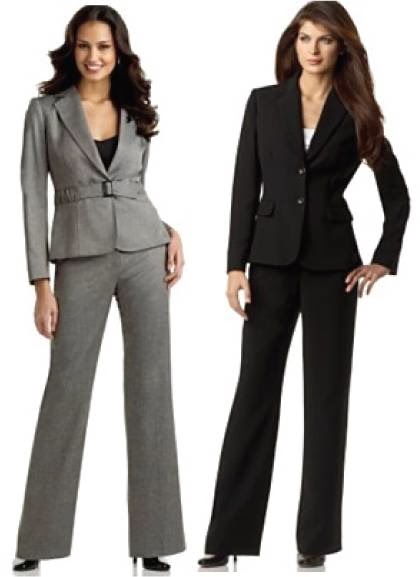Depending on the workplace, different levels of business attire are expected. The dress codes range from traditional and formal to smart casual, business casual and casual. You don't need an official dress code to understand what the business attire is in your workplace. Observe what other successful employees wear to work. The impressions that you make on colleagues and bosses has effects for how you are viewed in your workplace.
Monday, November 25, 2013
Introduction
Hello! My name is Natasha Al-Najar. Welcome to my blog! I am a Human Resources manager for a Corporation in Auburn Hills. From my experience, employees that have been with a company for many years or have just started, will have questions about their work attire. Start out a new job by dressing just a little bit better than you believe is the norm to make a good first impression.
Four Different Types of Business Attire
The article from smallbusiness.chron.com explains the different type of attires for both men and women. The 4 different types of business attires that are listed in the article are:
http://smallbusiness.chron.com/four-different-types-business-attire-23396.html
- Business Formal
- Business Professional
- Business Casual
- Small Business Casual
http://smallbusiness.chron.com/four-different-types-business-attire-23396.html
Business Formal and Professional Attire
If your business is formal, you need the right women's formal business-wear. Women's suits are appropriate and conservation.
- Suits: The keys to suits (either skirt suits or pantsuits) are fabric, fit and comfort. Choose suits with jackets and skirts that are appropriate for your body type.
- Don't make your skirt too tight, and don't make it too short. Business skirts typically are hemmed just around the knees.
- Blouses and shirts: What you wear with your suit is as important as the suit itself. Blouses made of transparent material are inappropriate. High-quality cotton and silk are good choices.
- Stockings and pantyhose: Pantyhose and stockings are both acceptable in the workplace. As long as they are matched to your other clothes, but are not heavily patterned. During warm months, if you feel comfortable doing so, going without pantyhose is fine.
- Shoes: Most women find that low-heeled pumps or flats are suitable for the majority of the business situations. Heels can be as high as 1 1/2 or 2 inches, but heels much higher than that look unprofessional.
- Suits: Get two or three made of wool and other blends for autumn and winter, and one made of cotton or tropic-weight wool for spring and summer.
- Pants: Traditional dress slacks. Always make sure they are ironed neatly and fit properly.
- Shirts: Long-sleeved white shirts and light blue shirts. There is no such thing as a short-sleeved dress shirt.
- Socks: Socks should be at least as dark as your suit or pants. Wear dark socks coordinated with the color of your suit.
- White socks are unacceptable in business. Wearing no socks is equally unacceptable.
- Shoes: Plain and cap-toed oxfords, wingtips and plain or tasseled loafers are the extent of men's choices for dress business shoes. Coordinate your shoe color with your suit color.
Business Casual
Business-casual dress codes have been established to allow employees to work comfortably in your business while still projecting a professional image on the job, with customers or clients.
Casual business attire for women requires some thought. When choosing feminine business-casual clothing, keep it simple. Start with the following items:
Business casual for men consist of the following items:
Casual business attire for women requires some thought. When choosing feminine business-casual clothing, keep it simple. Start with the following items:
- A dark jacket and several high-quality cotton shirts and plain white blouses.
- Dark skirts or pants (boot-cut or straight leg). Select colors in a dark neutral shades.
- Twin sets or other sweaters (cardigans) - which can be a great place to add color.
Business casual for men consist of the following items:
- Khaki and flannel pants are business casual for most businesses
- A short-sleeved shirt is a casual or business-casual shirt
- Button-down oxford shirts are business casual.
- Loafers and dark walking shoes are acceptable
- Blazers and sports coats are business casual for some businesses and dressy for others.
Conclusion
By following these guidelines, you can look professional in your selected business attire in your workplace. Just understand the standard that is expected, dress according to these guidelines, and assemble a wardrobe that is attractive and comfortable. Professional business attire doesn't define an employee's competence, but it goes a long way in influencing the impression of your boss, coworkers and customers about capabilities and professionalism.
I came across a YouTube video that had some interesting information regarding the workplace attire for both men and women. If you are interested in learning more, please watch the link below.
http://www.youtube.com/watch?v=9NqkmMqWyCE
I came across a YouTube video that had some interesting information regarding the workplace attire for both men and women. If you are interested in learning more, please watch the link below.
http://www.youtube.com/watch?v=9NqkmMqWyCE
Subscribe to:
Posts (Atom)




